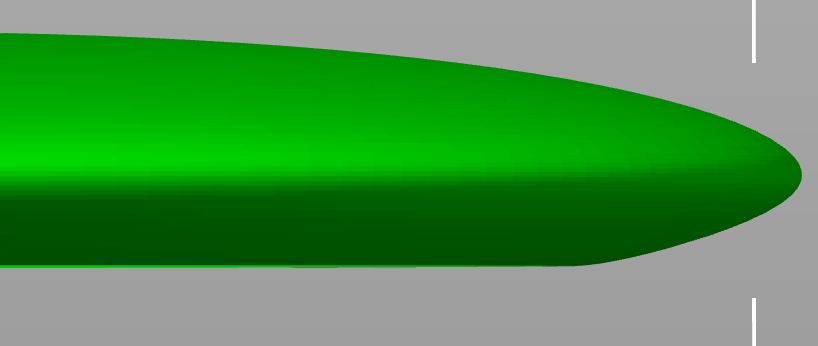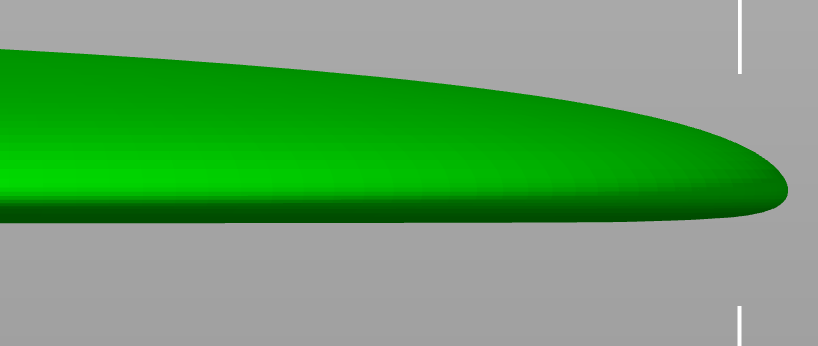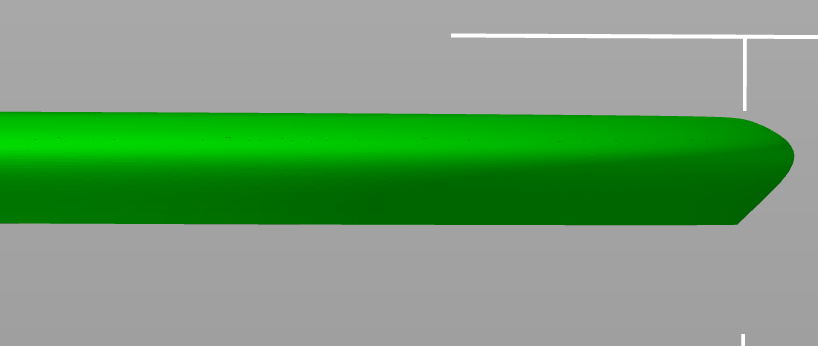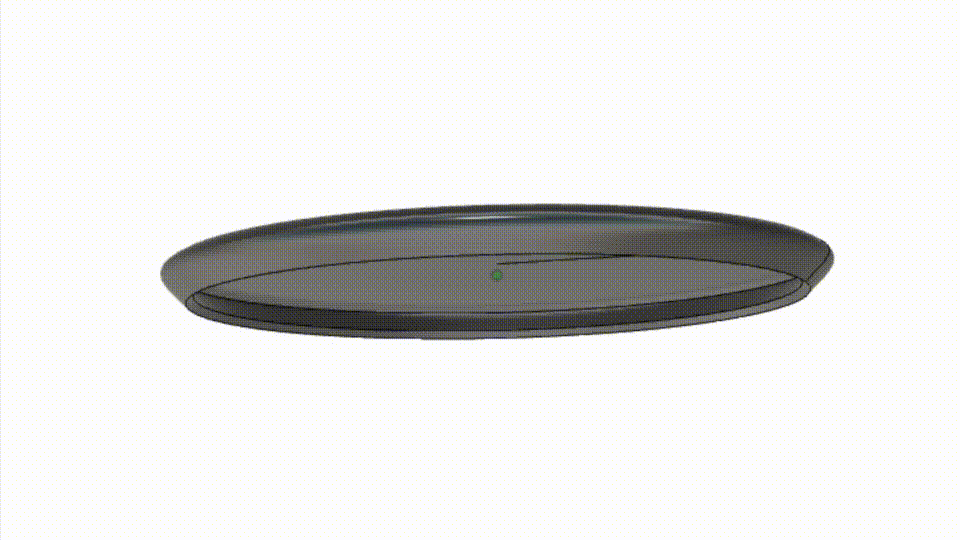I’ve been playing with small golf discs for a while now, and one thing is pretty obvious: if you don’t impart enough spin any disc is understable. When the spin is too low, the disc tumbles and doesn’t fly. It follows a chaotic but essentially ballistic flight, like a rock. Only forward motion allows the disc to actually fly, and only spin allows the disc to retain its orientation so it doesn’t tumble.
There is a relationship between the shape of the disc and its behavior at any reasonable rate of spin. The disc’s momentum carries it through the air and some of the air goes over the top of the disc and some goes under it. Where the air splits into two streams, call it the horizontal split, depends on the shape of the disc, but it is approximately where the diameter of the disc is greatest.
A wing (or a flying disc) produces lift in part because of the ratio of two different opposing forces, one above the disc and one below. The amount of the force above or below is based on how fast the air moves past it. If the path is curved because the disc has curvature (all of them do) then the air has to go farther in the same amount of time, and that means it goes faster. Faster moving air has less pressure than slower moving air because of the Bernoulli principle. If the pressure is lower above a wing than below it, that means the wing has lift and will want to go upward.
If the curve along the bottom is convex and has the same length as the curve across the top the lift upward is about the same as the “lift” downward. If the lift above is greater the disc experiences a force upward, sort of like gravity has been reduced. The converse is true too: if the bottom has more of a curve there is a downward force on the disc, as if someone turned up the gravity.
If the underside curve is concave it can act like an air bearing to reduce drag and it also can contribute to lift. If it is at an angle it is like a wing at an angle, it produces more lift until it stalls.
You would think that these forces would just make the disc fly further or hit the ground sooner, but disc flight is more complicated than that. While the lift does affect the overall length of the flight somewhat, it isn’t as important of an effect as how those forces interact with gyro. An airplane wing isn’t spinning and has no gyro effect. But a disc, while it looks like an airplane wing in cross section, is spinning and the gyro effect is very significant. In fact, it changes everything and makes possible all of the amazing kinds of throws used by disc golfers.
If you apply a force to a flying disc – any force at all in any direction, the disc does not behave as you would expect. It doesn’t just move in the direction of the force the way a balloon would. The force on the gyro also changes its angle of flight. When a force is applied to a gyro, that cause it to precess. That means the disc leans. It doesn’t lean away from the force, nor toward it. It leans at an angle to the force. How much it leans depends on the amount of force.
You can see this for yourself. Spin a disc on your finger and then lay another finger on the side of the disc to slow it down. The disc doesn’t just slow down. It also tilts. It is impossible to make it slow down with the second finger without tilting. Try it. You cannot do this because it is physically impossible. The nature of gyros prevents you. If the disc is spinning very slowly you won’t notice this effect, but at the rate a flying disc spins this is an extremely noticeable effect.
A flying disc is a gyro, and when the upward life and downward lift are not equal there is going to be a force on the disc and the disc will tilt, one way or another.
This is why some discs are overstable and some are understable. And, if you throw a disc with too little spin it will often be more understable even if it would have been stable or overstable with sufficient spin. A disc isn’t consistent in how much it is stable or understable or overstable unless you throw it with a consistent velocity and spin every time. This is true whether the discs are small or regular sized. How you throw the discs affects whether it is understable, stable or overstable.
I wanted an overstable small golf disc. Whilethe Longsword is fairly stable with enough spin, it is also pretty heavy. I wanted a lighter and even more stable disc. So, I started designing a new disc. I just guessed at a shape, designed a 3D model and printed it so I could try it out. This was the first profile:

It was incredibly understable, no matter how much spin I put on it. I wondered if maybe I flattened the bottom if it would become more stable. So, I made a second version that looked like this:

It too was understable. So, I tried it the other way, with a flat top and a curved bottom, like this:

The first time I threw the Falcon 3, I was blown away! It was actually overstable and my righty backhand throw curved slightly right! Wow!
Version 3 had a skin that was 1.25mm thick and weighed 8.3 grams.
I designed a version 4 of the Falcon with the same shape, but a 1.5mm thick skin. It weighed 11 grams. I also made a version 5 that had a 2mm thick skin that weighed 13.2 grams. And I made a version 6 that had a 1.5mm skin but a much, much thicker rim so it would have a stronger gyro effect.
The heavier the disc (whether because of a thicker skin or because of a thicker rim) the more understable the disc performed. Indeed, the best performer was the lightest version: the third design, the Falcon 3. I threw them all a bunch of times (underhand backhand). The Falcon 3 sometimes flew almost completely horizontally for 20 or 30 meters and then faded toward the overstable side. I could not do that even with the longsword. None of the other discs could match the Falcon 3.
There is no point in releasing the other Falcon models – they aren’t particularly great discs compared with version 3. So, that version is just called “The Falcon”, or “Falcon”, or “El Falconorino” if you’re not into the whole brevity thing. Ahem.

The Falcon: 78mm x 5mm, 9 grams, the first overstable small golf disc.
Up next: The Falcon, Part 2, where I show in pictures and describe how hard it was to come up with a way to reliably print the Falcon.